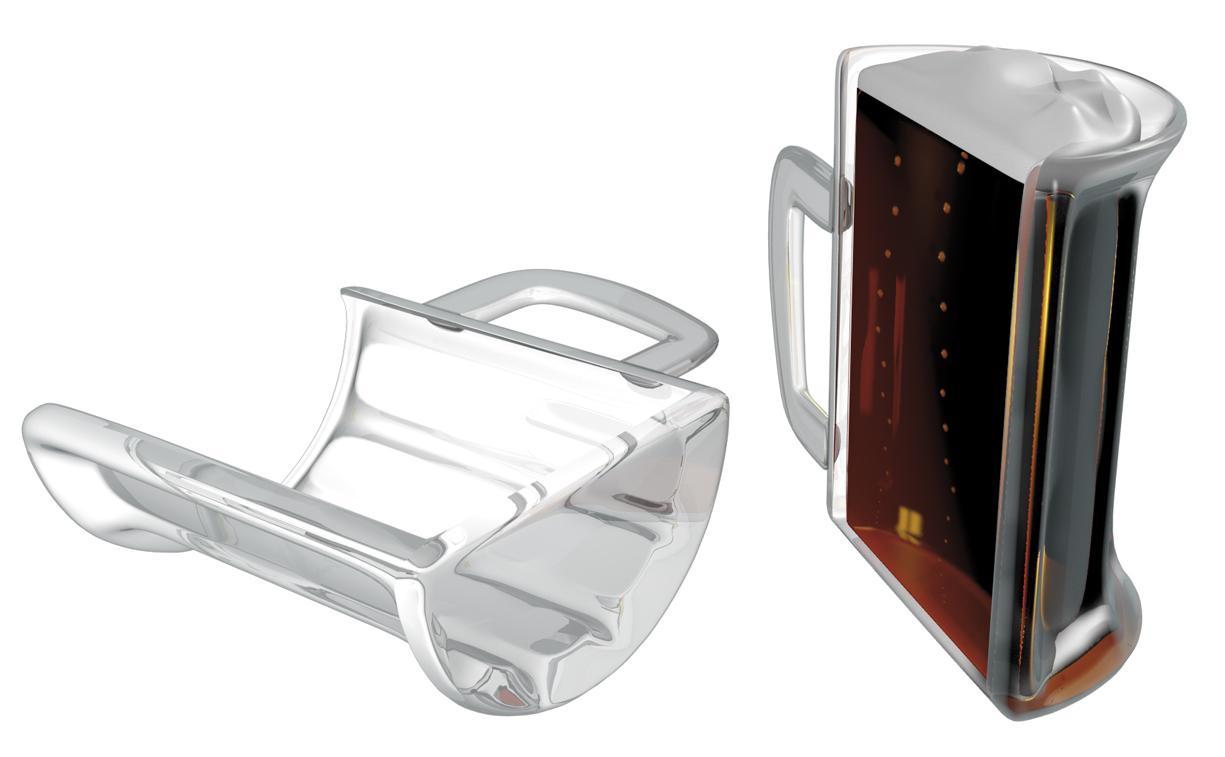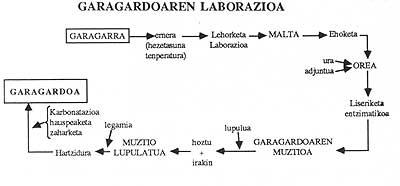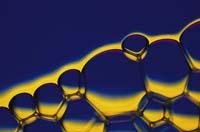War by foam
2011/10/01 Roa Zubia, Guillermo - Elhuyar Zientzia Iturria: Elhuyar aldizkaria

Foam is important in beer. It protects the drink, the air does not reach the liquid and does not oxidize. What's more, as the foam bubbles are broken, some volatile components of the beer are released. The foam protects the flavor.
And not only that, but it also helps the look of beer. The beer with spectacular foam is sold better than without foam. It is the law of the market. But there is a problem: the foam disappears over time. It is the law of physics. Therefore, brewers make a great effort to keep the foam as long as possible.
It is easy to make foam, but it is not so easy to get the foam to stay long. Therefore, in the beer industry, the duration of the foam is measured and is considered a quality factor.
The foam is the gas trapped in the bubbles of the drink, so to form the foam are necessary two components, the gas and the liquid that will catch it well. In the beer there are both. Gas is generated in fermentation; beer is an alcoholic drink and is the yeast itself that produces carbon dioxide, carbon gas. On many occasions, the fermentation does not produce the gas that the brewer wants (or is not generated at the desired speed), so it is added the carbonic gas. The presence of gas is not a problem, but the mixture of beer ingredients should be adequate to form bubbles. And there is the question.
The beer has many components, some of them help to create bubbles and others prevent it. But many of these last ones are necessary to make the beer good. That is the problem. The brewery has to look for a balance between the ingredients of the drink, if you want to get a flavor and consistency of consistency, at the same time you want the product to have foam. Some call art to this brewery equilibrium quest. As for the ingredients, however, it is a chemical war, whose persistence is the result of the evolution of it.
Bubbles Bubbles
In the beer there are hydrophilic components -- soluble in water -- hydrophobes -- not soluble in water -- and at the same time hydrophilic and hydrophobic. This complex mix produces foam bubbles. The situation is dynamic, the chemical war changes and little by little the foam disappears.
According to experts, the persistence of foam depends, above all, on hydrophobic peptides from barley. These peptides have a chemical enemy, a yeast protein, protein A. Once the fermentation is finished, the beer is filtered, but the yeast does not completely disappear, so the proteinase A remains in the beer. Since the creation of Pilsner beer, the type of yeast used in most beers falls to the bottom of the bottle (there are exceptions such as English grains). When serving the yeast is stirred and the chemical war is launched; the proteinase reduces the hydrophobic peptides and the foam has no long future in the glass.
Is it possible to avoid it? Yes. For example, beer can be pasteurized (and often) to kill yeast and neutralize proteins. But those who make good beer do not want it, because keeping alive the yeast also gives good smell and flavor to the beer in the rest after fermentation. Therefore, the brewer must decide to what extent he wants the living yeast to benefit from it and to what extent he will suffer its damage.
However, there are other components that protect or attack foam. In general, the more viscous the mixture is, the harder the foam. Some hop components, for example, help. This plant is added as an infusion to give the beer a nice bitter taste. During the process releases some alpha-acids, compounds that stabilize the bubbles. For example, fats of other additives are harmful to foam (but good to taste). The balance is complex.
Therefore, the art of the brewer consists of playing with the ingredients, controlling among other aspects the temperature and pressure of the process. But there is another option: gas handling. In fact, the gas aims to escape the bubbles, since carbon gas, in addition, is in a very low concentration in the atmosphere compared to foam: 0.2% in atmosphere and 98% in bubbles. But some Stout type beers like Guiness or Murphy's are added another gas: nitrogen. The air has a lot of nitrogen, so the foam nitrogen does not exert much strength to escape the bubbles. It forms small bubbles and the nitrogen foam forms a cap in the form of a cream for beer. In the bars it is added nitrogen through the source, while the can carries a ball full of nitrogen that when opened releases gas.
Regardless of the type of spill, spill is a critical moment. The beer reaches the glass and the brewery can do nothing else. Alea jacta est . Still the server can provoke something in the destination of the foam, but not much. What has to happen. Yes, the slower it happens, the greater the pleasure. It is the law of Zurrutari.

Gai honi buruzko eduki gehiago
Elhuyarrek garatutako teknologia





